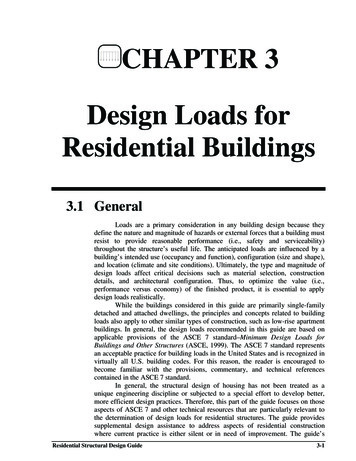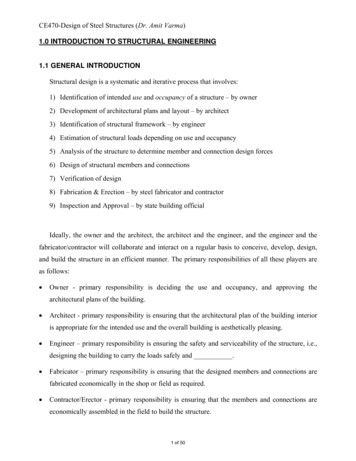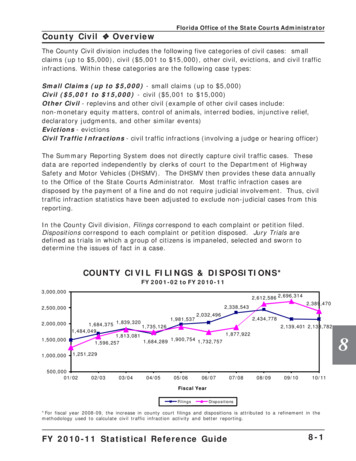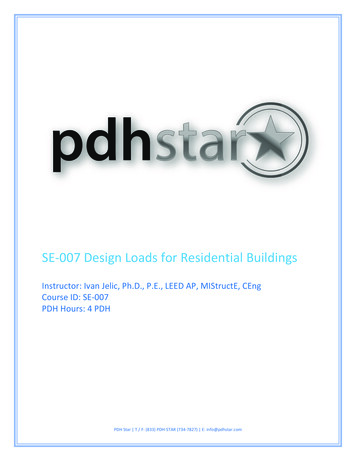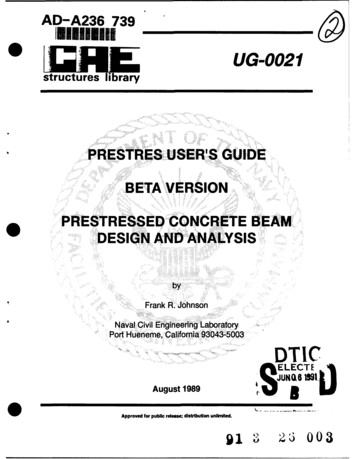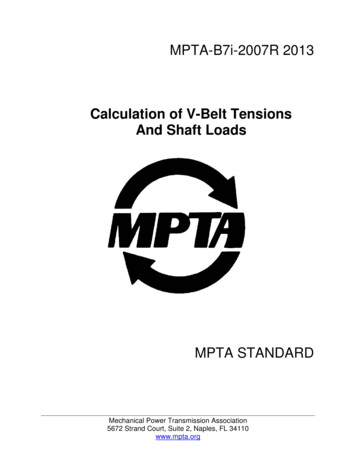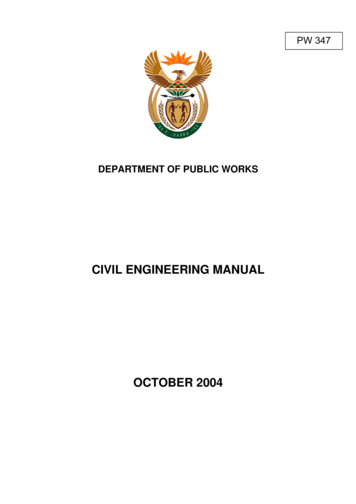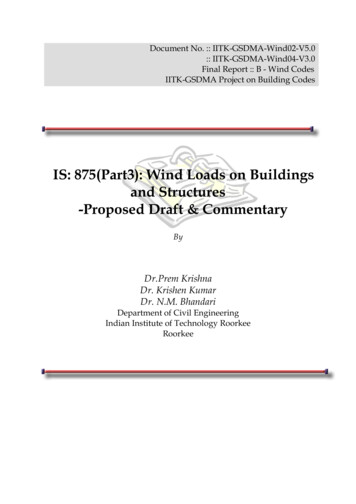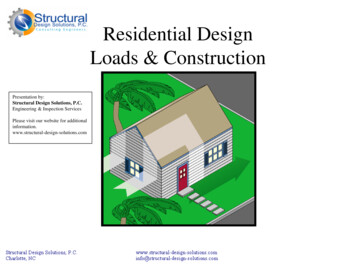
Transcription
Residential DesignLoads & ConstructionPresentation by:Structural Design Solutions, P.C.Engineering & Inspection ServicesPlease visit our website for ons.com
Design Criteria Structural Safety & Integrity– Buildings shall resist all lateral (wind & earthquake) and verticalstructural loads thru a continuous load path transmitting themultimately to the ground Structural Serviceability– Portions of buildings shall limit vertical deflections & lateral drift(movements)– Problems can usually be identified by material fatigue, such asexterior veneer or interior wall cracks or squeaky floors Durability– Specified materials and construction methods will result in a longlasting building
Construction Terms
Loading Types Dead LoadLive LoadCold Weather LoadSoil LoadWind LoadEarthquake Load– Not required in NCfor typical residentialhome
Dead Loads Defined as the Weightof Permanent Portionsof a Building Typically includes allConstruction Materials
Dead Loads, cont’dTypical Weights of Horizontal Systems Roof Construction– Asphalt Shingles 15 psf (pounds per sq. foot) Ceiling Construction– Gypsum (Sheetrock) finish 10psf Floor Construction– Carpet or Vinyl 10 psf– Hardwood Floor 12 psf– Ceramic Tile 15 psf
Dead Loads, cont’dTypical Weights of Vertical Systems Timber wall, wood sheathing, & gypsuminterior finish, with:– Vinyl Siding 8 psf– Thin Coat Stucco 11 psf– Standard Brick Veneer 45 psf 8 inch Masonry Wall fully grouted 75 psf 8 inch Concrete Wall 96 psf
Live Loads Non-PermanentWeight torage
Cold Weather LoadsSnow Typically applied to exposed roofs or decks Ground snow load commonly 10 psf Usually roof live load governs unless snow drifts areconsideredFrost Heave Condition where soil under footing freezes and exertsupward movement on the foundation Bottom of Footings must be below frost depth to avoid thisissue, commonly 12 inches in the Charlotte andSurrounding areas – refer to IBC for exact values
Soil Load Soil Backfill exertspressure on walls Based on height ofwall and restraint Typical Wall Forceper ft– Basement 18h2 (lb/ft of wall)– Retaining 30h2 (lb/ft of wall)
Wind Loads Based on 90 mphwind speed Roughly 20 psf Based onASCE 7-05
Wind Force Resisting System Portions of structure that keepsbuilding from failure underwind loading Diaphragms include Floors &Roofs Shear Walls include Timber &Masonry Walls– Not all Walls are Shear Walls Load Path– Wind Hits Wall EntersDiaphragm Shear WallsResist Movement Foundations Hold Shear Walls
Wind Force Resisting System, cont’d Prevents Sliding Prevents Overturning
Diaphragms Types
Timber Shear WallsPrescriptive Most Common Cost Effective Does Not RequireEngineering Analysis Limited in Applications
Timber Shear Walls, cont’dEngineered Stronger Designed by Engineer Requires SpecificKnowledge to Install
Typical Framing Details
Vertical Load Path
Lateral Load Path
Foundations Vary depending onlocal conditions Most Common arethe crawl space,basement, &monolithic Foundation mustresist vertical andhorizontal loads
Floor & Wall Systems
Floor Beam Types
Roof SystemTypical Framing
Residential Design Conclusions This presentation was intended for a simpleoverview of the loading and design of residentialhomes When structural elements are in question, pleasecontact a registered professional engineer todetermine its integrity and safety Please refer to our other presentations foradditional information located at:www.structural-design-solutions.com
Dead Loads, cont'd Typical Weights of Horizontal Systems Roof Construction -Asphalt Shingles 15 psf (pounds per sq. foot) Ceiling Construction -Gypsum (Sheetrock) finish 10psf Floor Construction -Carpet or Vinyl 10 psf -Hardwood Floor 12 psf -Ceramic Tile 15 psf
